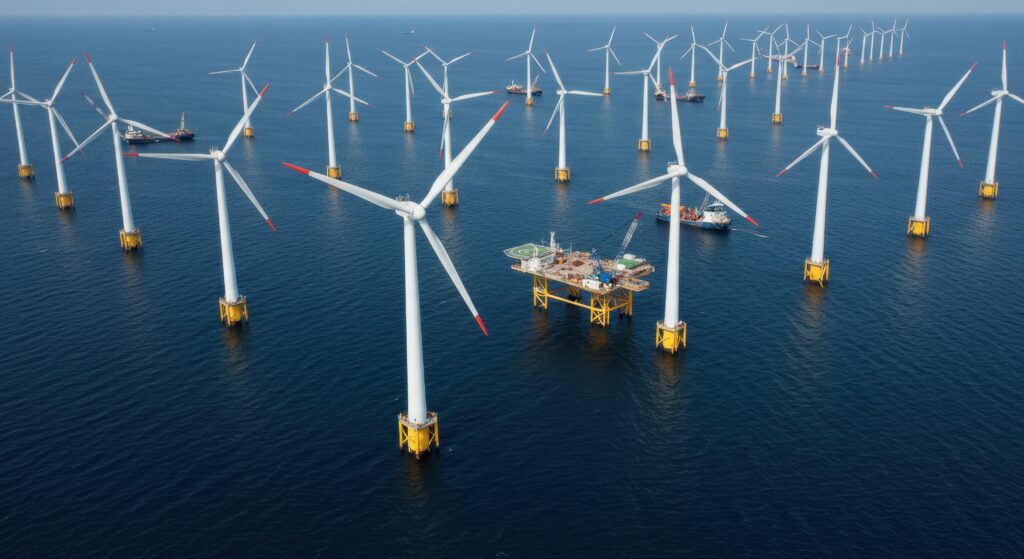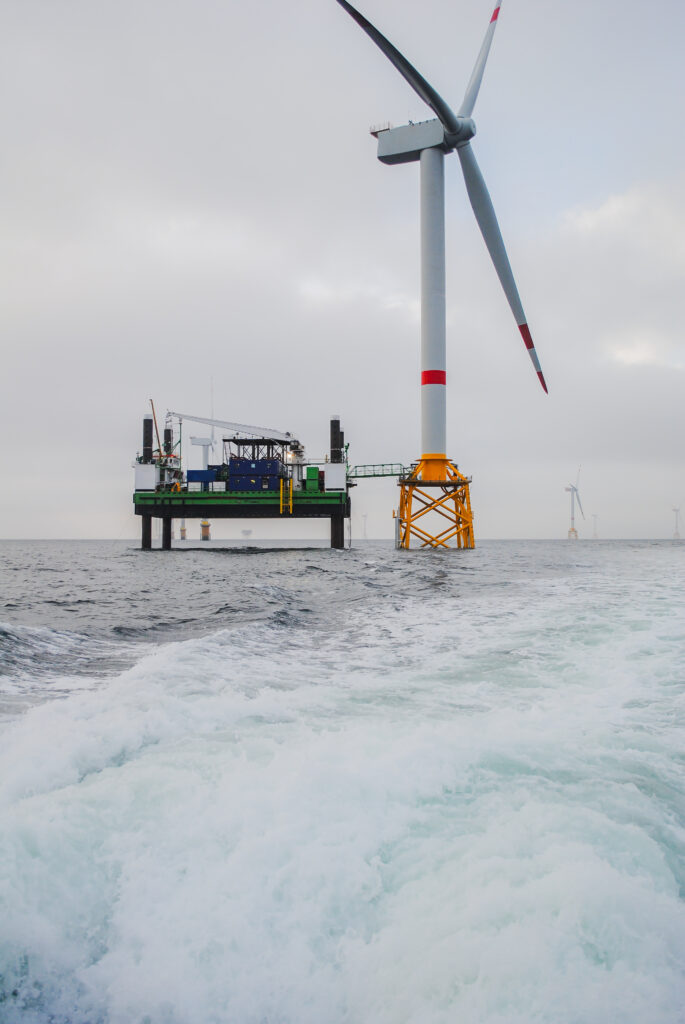





Offshore wind energy represents one of the most promising frontiers in renewable energy expansion. As the world pushes towards cleaner energy sources, offshore wind farms are gradually becoming vital components of national energy strategies. The unique advantages of these installations, combined with technological advances, make them a key player in the renewable energy landscape.
The Rise of Offshore Wind Energy
Offshore wind energy has gained momentum due to its ability to harness stronger and more consistent winds found at sea. The energy produced from offshore wind is significantly higher than onshore due to better wind speeds and reduced turbulence. Countries around the world, especially in Europe and North America, are rapidly increasing their investment in offshore projects. For instance, the UK has led the way, with ambitious targets to expand its offshore wind capacity to 40 GW by 2030. This also reflects a growing recognition of offshore wind’s potential to contribute to net-zero emissions goals.
Technological Innovations
Technological advancements are at the heart of the rapid expansion in offshore wind energy. Innovations in turbine design have allowed for larger and more efficient turbines, which can generate more power. Recent models can exceed 12 MW and have rotor diameters of up to 220 meters. Moreover, floating wind technology is beginning to allow turbines to be placed in deeper waters, expanding the areas suitable for development significantly.
Economic Benefits
Investments in offshore wind can yield substantial economic benefits. The offshore wind sector not only creates jobs during the construction and maintenance phases but also stimulates local economies through increased demand for equipment and services. Additionally, offshore wind farms can provide cheaper electricity to consumers thanks to lower operational costs once installed compared to fossil fuel plants.
The cost of offshore wind energy has decreased significantly over the past decade, making it one of the most competitive renewable sources in terms of price. According to recent reports, the cost of energy from offshore wind farms has dropped by over 70% since 2010, leading to new possibilities for including it as a core part of energy generation systems globally.
Environmental Impact
Transitioning to offshore wind is crucial for reducing greenhouse gas emissions. Wind energy is one of the cleanest forms of energy for generating electricity, helping to replace fossil fuels and mitigate climate change. Furthermore, offshore wind installations often have less environmental impact than onshore farms, as they can occupy areas that do not interfere with wildlife habitats on land.
Challenges Ahead
Despite the potential advantages, the offshore wind sector faces challenges that must be addressed to unlock its full capabilities. Regulatory hurdles can delay project approval, which impedes progress. Additionally, while the technology is advancing, logistical issues related to installation and maintenance in marine environments can be complex and costly.
The integration of offshore wind energy into existing national grids poses another challenge. Upgrading grid infrastructure to accommodate variable wind energy requires significant investment and planning. Countries need strategies to ensure that the energy produced from offshore wind can be effectively distributed to consumers.
Future Prospects
As countries strive to meet their energy goals, the future of offshore wind looks bright. With global commitments to cut carbon emissions and transition to sustainable energy sources, offshore wind could play a pivotal role in meeting these targets. Major offshore wind projects are already underway or being planned globally, evidencing a movement towards a greener future.
Industry leaders predict that, by 2030, the installed capacity of offshore wind worldwide could surpass 200 GW. This projection includes both fixed and floating technologies, showcasing the vast potential for growth.
Conclusion
Offshore wind represents a crucial pillar in the transition to sustainable energy. With its capacity to produce a significant amount of clean electricity, coupled with the ongoing reduction in costs, it plays a vital role in tackling climate change. Collaboration between governments, private sectors, and stakeholders is essential to overcome existing challenges and unlock the full potential of offshore wind energy.
For those interested in learning more about renewable energy innovations and technologies, visit Recharge News for more insights. Moreover, if you want to explore extensive resources related to renewable energy advancements, check out our Energy Transition section. Whether you are an industry insider or a curious learner, understanding the future of offshore wind energy is crucial for active participation in shaping a sustainable world.
Let us harness this powerful and renewable source of energy and pave the way toward a sustainable future.
For more information, visit Andromeda Energy


Leave a Reply